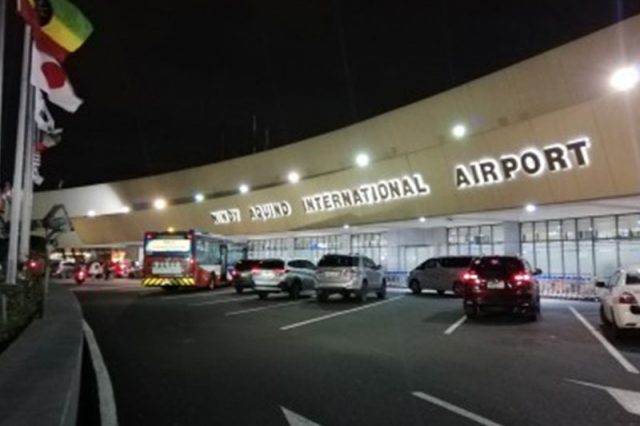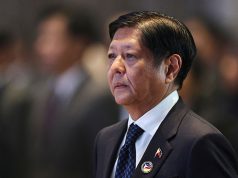
The issue of renaming the Ninoy Aquino International Airport (NAIA) was brought up anew after Filipinos shared their opinions on a news outlet’s Facebook post in 2020.
News5 in June 2020 reported that some lawmakers proposed to rename the country’s main international gateway to “Paliparang Pandaigdig ng Pilipinas” to make it more politically neutral.
At that time, Rep. Paolo Duterte (First District, Davao City), Rep. Lord Allan Velasco (Marinduque) and Rep. Eric Yap (ACT-CIS party-list) filed a bill to rename NAIA for it to have a “more representative branding for the international gateway” of the country.
“Aside from it bearing our country’s name, it is in our national language. We want it to reflect the legacy of the Filipino people, our everyday heroes. The name bears no color, no political agenda. It only signifies our warmth as Filipinos in welcoming our own kababayans and foreign visitors,” Duterte said before.
“We want for the name of our country to be the first thing welcoming the return to our countrymen, as well as tourists from abroad when their planes land. We want to make them feel like they are home,” Yap added.
“There are many personalities who also deserve their name, institution, and so on. But when it comes to our airport, it should reflect the country and the Filipino people,” he continued.
As of April 2022, another lawmaker has filed a bill proposing to change NAIA’s name back to its original name, Manila International Airport.
In 2018, controversial lawyer Larry Gadon also proposed the same matter in a petition to the Office of the President and the House of Representatives.
Meanwhile, the news outlet in 2020 asked its Facebook followers if they are in favor of changing the name of NAIA.
“Dapat bang palitan ang pangalan ng Ninoy Aquino International Airport?” it asked netizens then.
The quote card gained recent comments from some Filipinos as others agreed with the proposal.
“Yes. Indi [sic] naman kang [sic] Ninoy ‘yan eh. Yes to ‘Manila International Airport,'” a Facebook user wrote on April 1, 2022.
“Yes, Philippine International Airport na lang po sana,” another online user commented on May 17, 2022.
Other Filipinos suggested that the airport should be named after Ferdinand Marcos Jr, presumptive president-elect.
“Yes to BBM international airport,”a Facebook user said, referring to the initials of Bongbong Marcos’ nickname, “BBM.”
Some also suggested renaming the airport to “Philippines International Airport.”
“Mas maganda Philippines International Airport [kasi] yong ibang bansa nga pangalan mismo ng bansa ang airports,” another Facebook user commented.
Other Filipinos, however, said they are not in favor of the proposed name change.
“NO NEED. The name it has right now fits well with the history we need to remember especially, by the young generation of Filipino who lack the needed depth and knowledge of our very own history,” a Facebook user wrote on April 28, 2022.
“If we keep on renaming places now and then, we lose a significant part of knowing who we are and learning about our past. We are not going to rename Lapu-Lapu City, Quezon Province, the City of Gen San, EDSA, Bonifacio Avenue, Rizal Park, Taft Avenue, and countless more just for the sake of mere wishful thinking,” the user added.
“There are many airports in the world dedicated to men of great contributions of honor to their country. If you have (problems) about Ninoy’s credentials and his sacrifices… read your ‘real history’ and deal with it,” another Filipino wrote on April 26, 2022.
Among the airports that carry the name of popular personalities include New York City’s John F. Kennedy International Airport and France’s Charles de Gaulle Airport.
In the Philippines, several airports are named after notable personalities.
These are Malay, Aklan’s Godofredo P. Ramos Airport; Davao City’s Francis Bangoy International Airport; Tacloban’s Daniel Z. Romualdez Airport and Busuanga’s Francisco B. Reyes Airport, among others.
What’s in a name?
Proposals to rename the Manila International Airport to NAIA can be seen in Republic Act 6639.
The law was a result of initiatives to honor late senator and opposition leader Benigno “Ninoy” Aquino Jr. who was shot at the tarmac of the then-Manila International Airport when he returned to the Philippines on Aug. 21, 1983.
Aquino was on his way to return to the country via China Airlines under military escort at that time. He has spent three years in the United States in a self-imposed exile where he delivered speeches critical to the administration of the late Ferdinand Marcos Sr.
Moments after descending from the airline, Aquino was gunned down by an unknown assailant.
A report from The New York Times said the opposition leader was shot “9.2 seconds after he began his descent from the staircase.”
A testimony of the event from his website notes that Aquino was also shot from the back at close range.
Then-representative Raul Daza of Northern Samar, who passed a house bill that became RA 6639, justified the name change of the airport with the following responses, according to VERA Files:
- “That after the EDSA Revolution, international pilots, whenever they land in the Manila International Airport, announce that they are about to land at the Ninoy Aquino International Airport;”
- “That in recognition of the martyrdom of the late senator, airline pilots submitted a petition to the then Secretary of Transportation and Communications that requested the renaming of the airport as Ninoy Aquino International Airport;” and
- “That as the then Secretary of Transportation and Communications, Mr. Perez drafted an Executive Order renaming said airport as Ninoy Aquino International Airport but the President [Corazon ‘Cory’ Aquino] reprimanded him on the ground that renaming airports is legislative and not an executive function.”
Aquino’s assassination sparked outrage from critics of the Marcos administration Sr.
Three years later, a series of public protests would happen for four days.
The Official Gazette said that it was a manifestation of Filipinos’ sentiments against the totalitarian rule, which was further triggered by the rigged 1986 snap elections.
The demonstrations would progress to the People Power Revolution or the EDSA Revolution, which gained international recognition for the bloodless ousting of a strongman.









